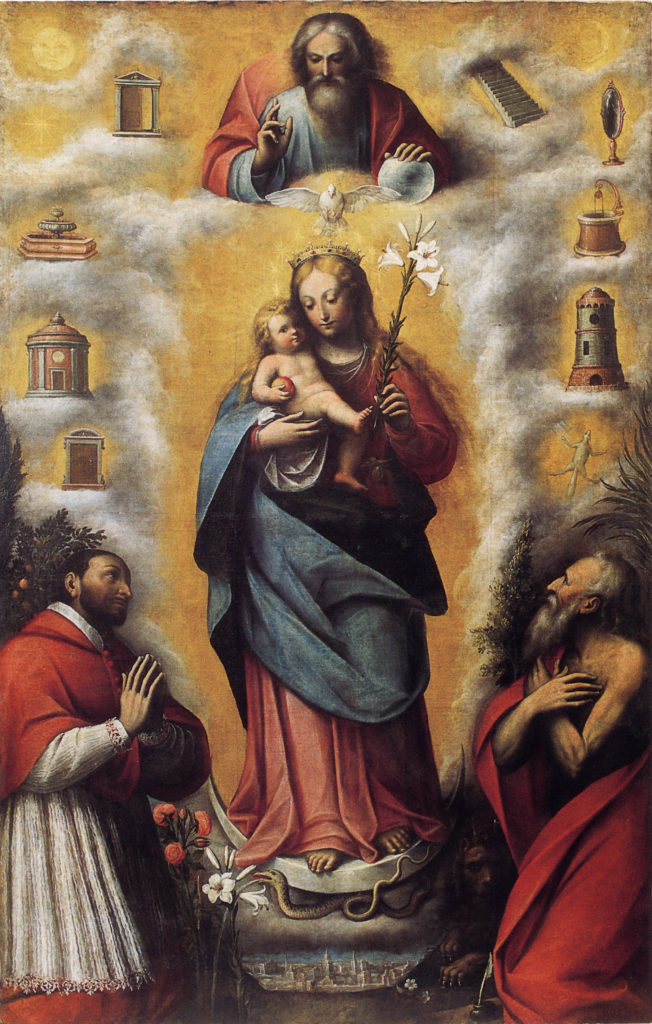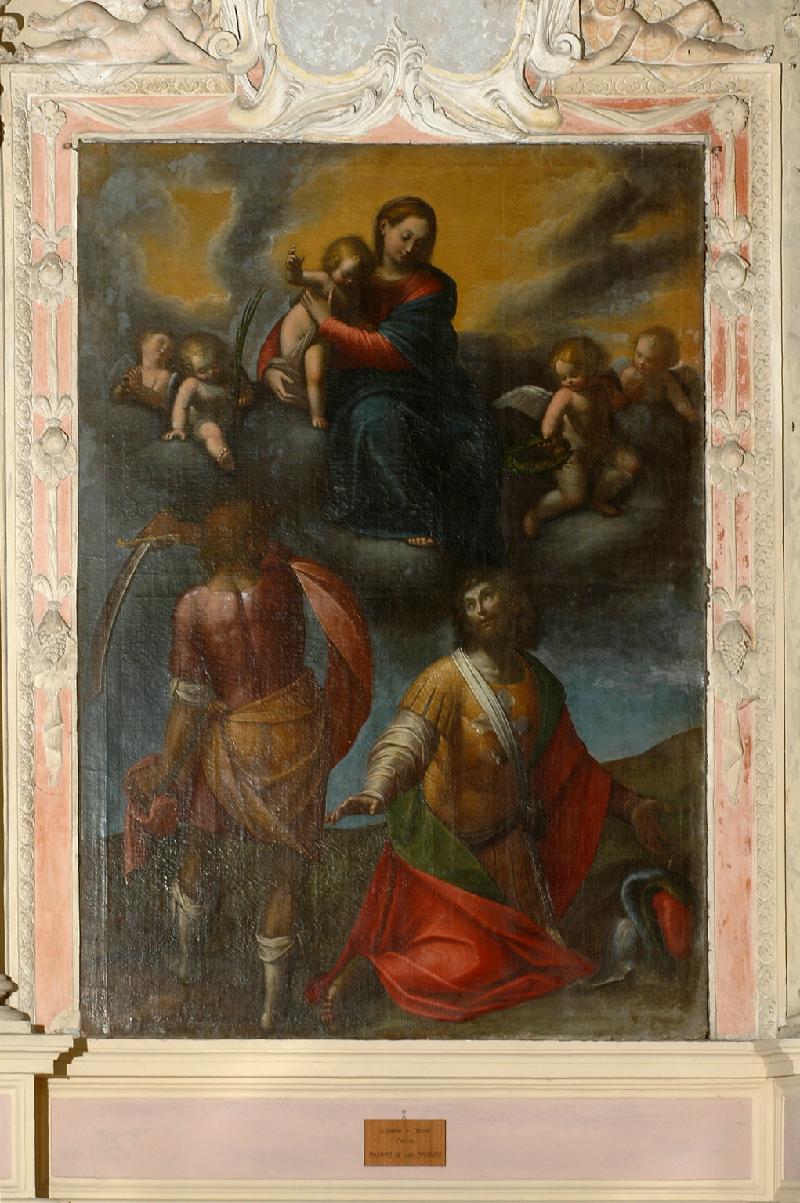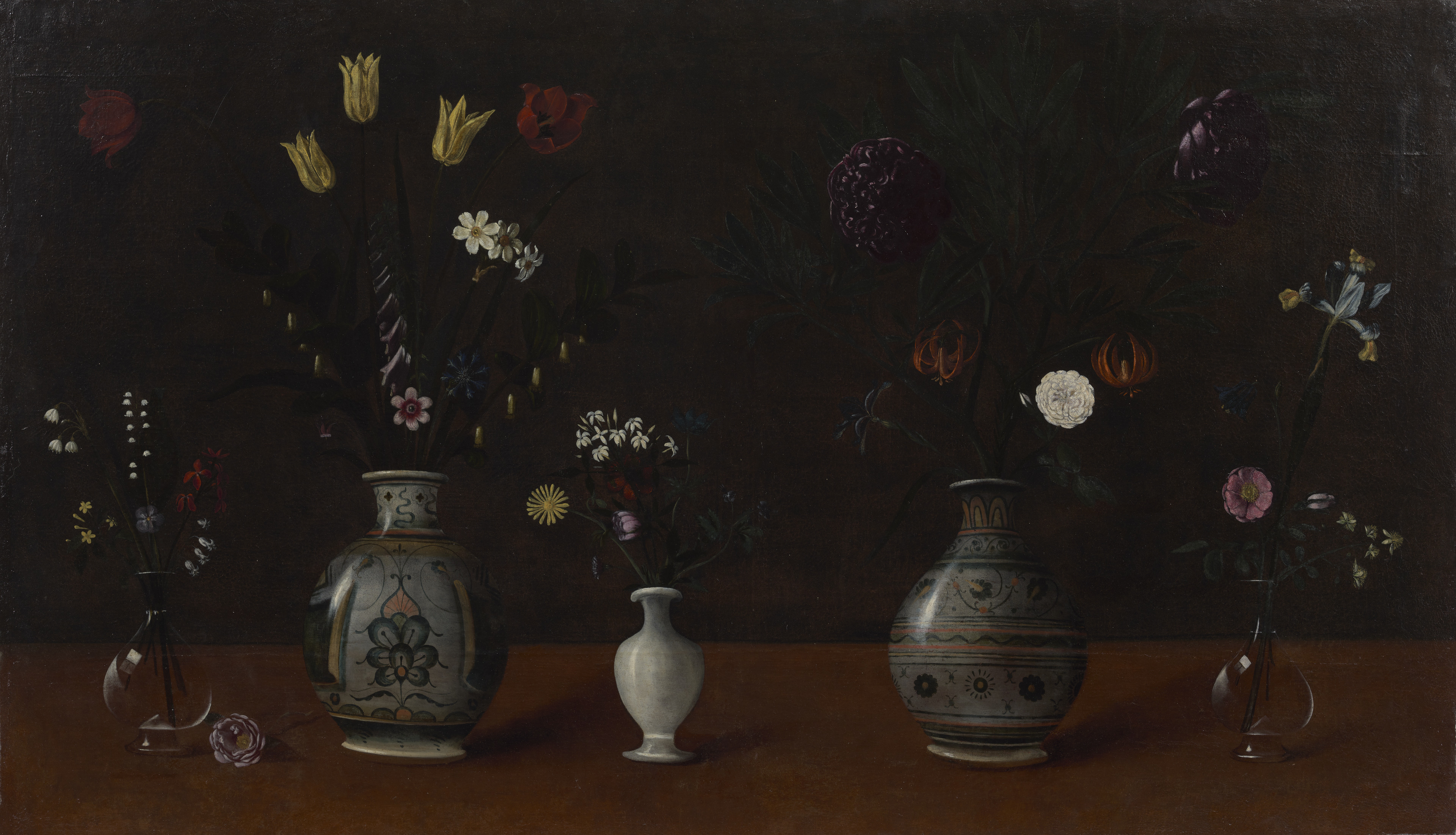Orsola Maddalena Caccia, born Theodora Caccia
Active in: Italy
Alternate names: Theodora Caccia
Biography
The daughter of the painter Guglielmo Caccia, called il Moncalvo, (1568–1625) and Laura Olivia, herself the daughter of a painter, Orsola Maddalena Caccia was born in Moncalvo in 1596 and baptized Theodora Orsola on December 4 of that year. In 1620, she entered the Ursuline convent in Bianzé in 1620, where she took the name Orsola Maddalena. She was one of six Caccia sisters who joined the convent. When political and military unrest threatened the convent in Bianzé, her father received permission to establish an Ursuline convent in their hometown of Moncalvo in 1625.
Guglielmo Caccia died soon after her daughters returned to Moncalvo and in 1626, Caccia inherited all of the materials from his atelier, opened a workshop, and began to take on students and assistants. She took on public and private commissions to generate financial support for the convent. Although she primarily made religious genre scenes and altarpieces, she is credited with producing some of the earliest still life paintings in Northern Italy and she often included still life elements within her religious paintings. Her floral floral still-life paintings represent a striking fusion of careful botanical observation, strict symmetry and sacred symbolism. Several are now held by the Museo Civico di Moncalvo and each demonstrates a careful balance of devotional with decorative functions. They were most likely painted for personal use and sold or given to private clients.
Later in life, Caccia became the abbess of the convent. She outlived all of her sisters and continued to paint until at least 1665. When she died in 1676, she left behind a body of work that included altarpieces, devotional panels, and processional banners, produced for churches throughout the Piedmont region. While these commissions supported the convent financially, in 1643 she wrote to Madame Royale, Christine of France (1606 – 1663), wife of Vittorio Amadeo, I, Duke of Savoy (1587-1637) in Turin, explaining that her convent was poverty stricken and asking for an opportunity to be paid for work. Caccia did not achieve fame during her lifetime but her name was known in the late eighteenth century, when the Jesuit priest Luigi Lanzi (1732–1810) mentioned her in a 1796 survey of Italian painting. He described her artistic achievements as comparable to those of her near-contemporaries, Lavinia Fontana (1552–1614) and Artemisia Gentileschi (1593–1656).
Selected Works

Orsola Maddalena Caccia, The Immacolata between Saint Charles Borromeo and Saint Jerome (Immacolata tra San Carlo Borromeo e San Girolamo) , c. 1624. Oil on canvas, 250 x 173 cm. Monastero Bormida, Chiesa di Santa Giulia.

Orsola Maddalena Caccia and Il Moncalvo, Martyrdom of St. Maurizio, c. 1623. Oil on canvas, 280 x 198 cm. Church of San Francesco, Moncalvo.
Circle
Daughter of
Guglielmo Caccia, an artist known as il Moncalvo (1568–1625)
Bibliography
Artoni, Paola. “Un inedita annunciazione di Orsola Maddalena Caccia. Atti Acc. Rov. Agiati 261, ser. 9, vol. 1 (2011): 129–35.
Barbato, Antonio, Paola Caretta, Alberto Cottino, Laura Guglielmone, Daniela Magnetti, and Giuseppe Vaglio. Orsola, Maddalena Caccia. Savigliano: L’Artistica Editrice, 2012.
Bartoli, F. Notizia delle pitture. Venezia: Presso Antonio Savioli, 1776.
Caretta, Paola. “Libri e note inventariali: Orsola Maddalena Caccia nei documenti di famiglia.” Studi Piedmontesi 48, fasc.1 (2019): 263–84.
Caretta, Paola. “Orizzonti figurativi e riferimenti culturali nell'opera di Orsola Maddalena Caccia,” Memorie Domenicane 46 (2015): 179–89.
De Conti, G. Ritratto della citta ́di Casale scritto dal casalese Canonico Giuseppe de Conti nell'anno 1794. Casale Monferrato, 1966.
Della Valle, G. Vite… scritte da M. Giorgio Vasari. Siena: Pazzini, Carli, 1792.
Ferro, Filippo Maria. “Le ‘Preghieri dipinte’ di Orsola Maddalena Caccia: aggiunte e reflessioni.” Arte Christiana 868 (2012).
Ghirardi, Angela. Italian Women Artists from Renaissance to Baroque. Washington, DC: National Museum of Women in the Arts; Milan: Skira, 2007.
Gianna Pomata, and Gabriella Zarri. I monasteri femminili come centri di cultura. Rome: Edizioni di storia e letteratura, 2005.
Irico, G. A. Tridinensis rerum patriae libri tres ab anno urbis aeternae CLIV. usque ad annum Chr. MDCLXXII. ubi Montisferrati principum, episcoporum, aliorumque illustrium virorum. Milan: Typis Palatinis, 1745.
Lanzi, L. Storia pittorica della Italia. Milan: Società Tipog. De' Classici Italiani, 1824–25.
Lupano, C. Moncalvo sacra. Moncalvo, 1899.
Minoglio, G. Moncalvo. Brevi cenni storici. Moncalvo: Centro studi piemontesi, 1877.
Negri, F. “Il Moncalvo (notizie su documenti).” In Rivista di storia,arte,archeologia per le provincie di Alessandria e Asti. 1895.
Orlandi, P. A. L’Abecedario pittorico. Bologna: Per Costantino Pisarri sotto le scuole, 1704.



